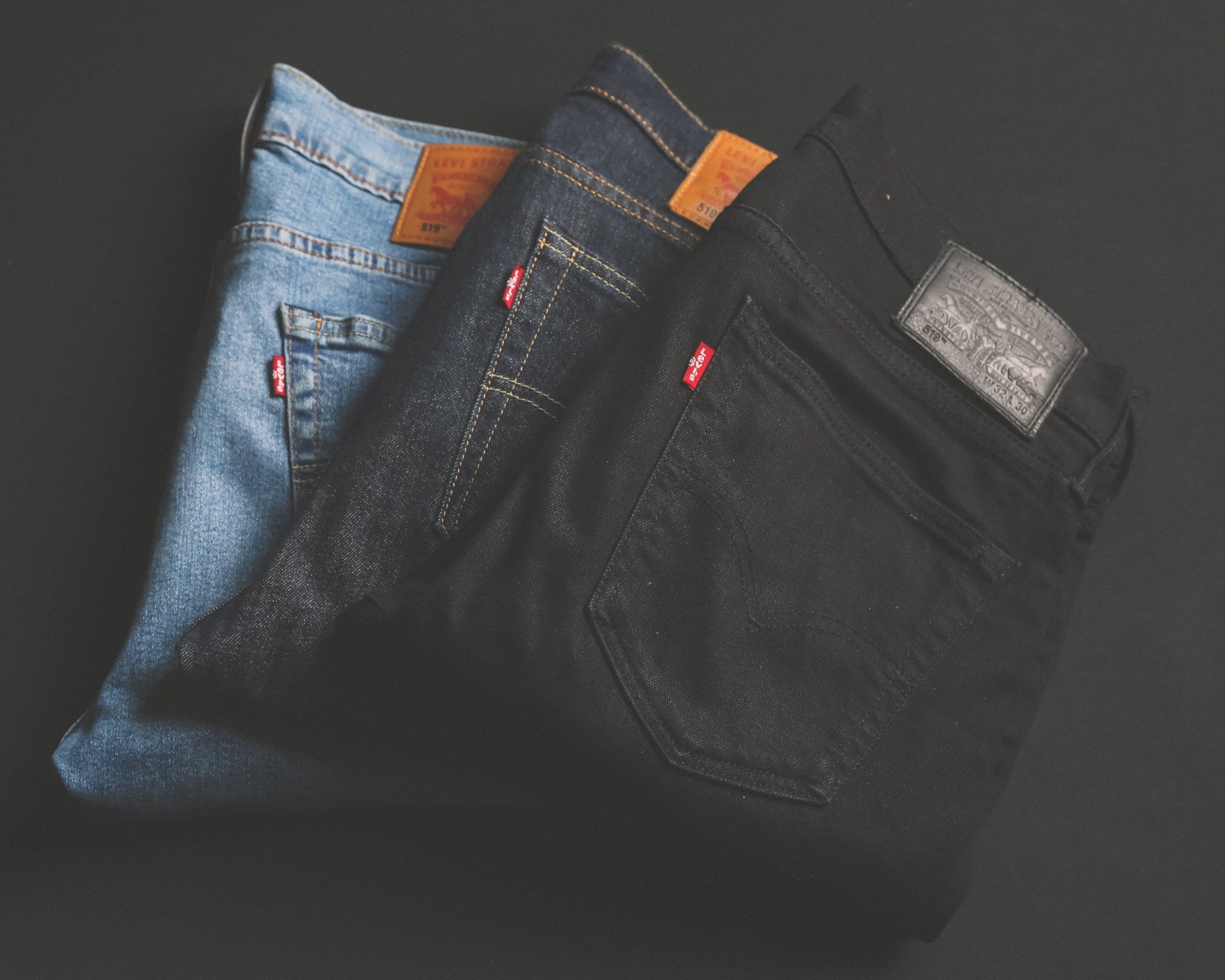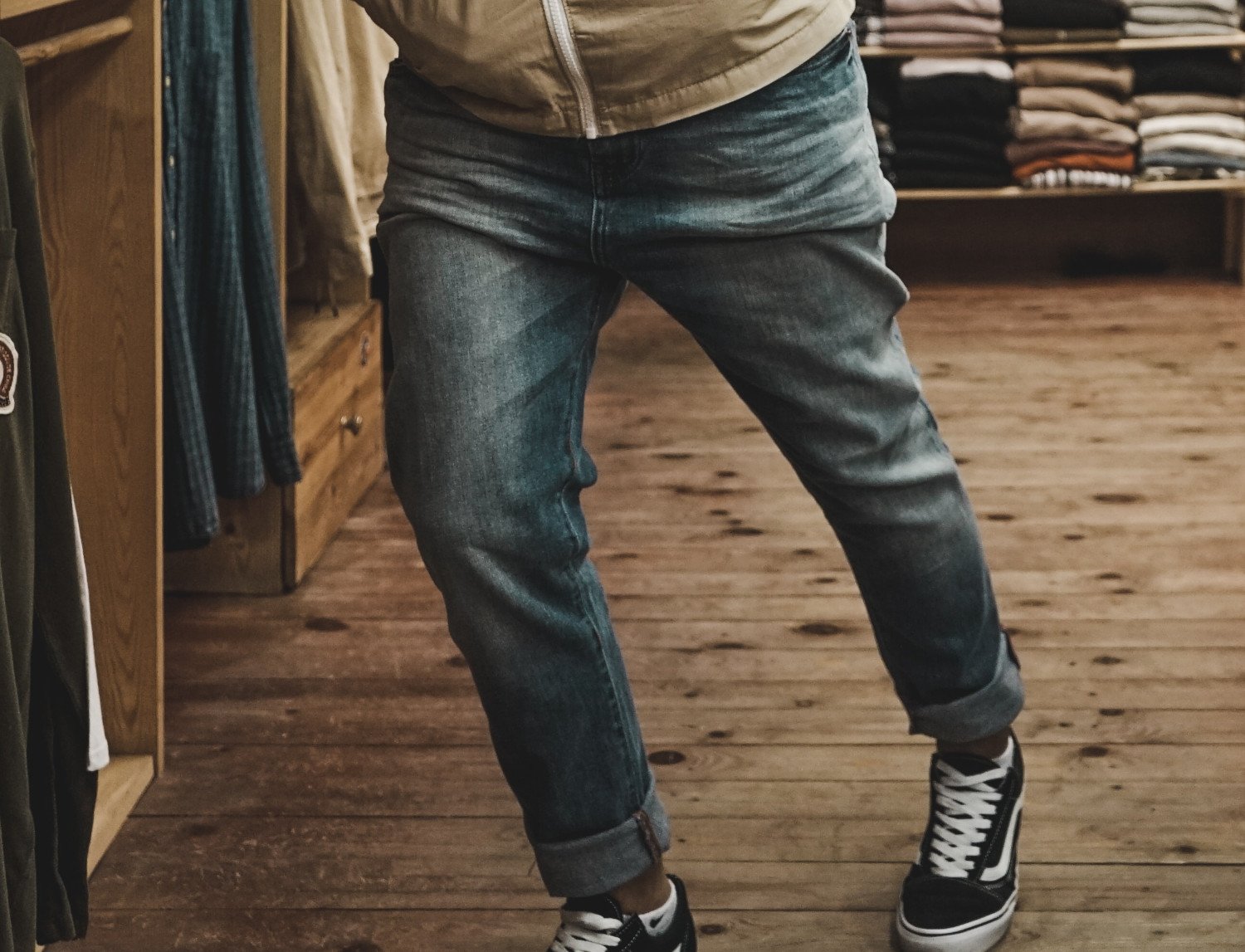How Should Dress Pants Fit? Sizing Suit Pants To Perfection
hether you're preparing for an upcoming event or you're looking to upgrade your wardrobe for a new job - dress pants sizing can definitely be overwhelming. The last thing you want is to look like you're swimming in your trousers - but you don't want them to be skin-tight or too short, either. There is a very fine line between a perfect fit and missing the mark. And this can be the difference between making a great first impression while staying comfortable or looking unkempt and uncomfy all day long.
Factor in the cost of a nice pair of men's dress pants and you can see why it is so important to learn how dress pants should fit correctly. That's why today, we're going to answer one of the most common questions we get: how should dress pants fit?
In this in-depth article you'll learn the importance of proper dress pants sizing, how to tell if your current pair fits you well or not, and the steps necessary to achieve sizing perfection. By the end of this guide, you'll be just a few clicks away from suit pants that fit like they were made just for you - let's dive in!
Why Learn How Dress Pants Should Fit?
Let's get one thing out of the way first - learning how dress pants should fit is very important. This is true of every type of garment - which is why we've also written guides such as how chinos should fit, how an overcoat should fit, and more.
This is not something you should take lightly. Why? Of course, when your suit pants fit correctly they are far more comfortable. Most of us wear our suit pants to work for 8+ hours a day - so the comfort factor is definitely an important consideration.
But comfort isn't even the main reason that proper sizing is so important. Rather, it's the appearance a nice fitting pair of pants offers.
When your suit pants are too big, you look unkempt with tons of extra fabric bunching up at your ankles, covering your shoes in some cases. Contrary to some of the silly pictures you've seen of your favorite NBA superstars, baggy suits were never in style. But, the same is true of suit pants that fit too tight.
Sure, we love the slim-fit dress pants look. In fact, we encourage you to taper your pants if that's the look you want. But if your dress pants look like skinny jeans, you've gone too far. This isn't a professional look either.
If you really want to look and feel your best - while making great first impressions at work, dates, formal events, etc. - the right sizing matters more than you think. So this begs the question - how should dress pants fit?
How Should Dress Pants Fit?
When trying on a pair of dress trousers, you should be able to tell right away if they fit well or not. This is something you can see and feel. Here are a few things to consider in determining if your current pair of pants fit you well or not:
If the pants don't stay right on your hips without a belt, the waist is too wide. Yes, you still need to wear a belt with your dress pants - but not because your pants don't stay on without one. You can also look for extra fabric. If you see fabric bunching up around your hips, thighs, calves, or ankles, it is a sign that you have sized your pants too large. In terms of length, you can tell your dress pants are too long if you sit down and don't see any bit of your socks. While you shouldn't see your socks while standing (except for in very particular types of suits), you should be able to see them while sitting.
Similarly, you can tell your pants are too small if you see fabric pulling rather than bunching. Beyond just the look, you'll be able to feel if your pants are too small. They'll be uncomfortable, squeezing your body wherever they are too small. And of course, if you see socks while standing, your pants are too short.
Simply put, your dress pants should fit nice and flat across all parts of your leg. If you see wrinkles or bunching in the fabric, the material is too big. If you see or feel the seams being pulled, the fit is too small. You have two options: take your pants to a tailor to rectify the problem, or invest in a custom pair of pants that are actually made to your measurements. And if you want to go with the latter, here is what you need to know in regards to dress pants sizing.
Step By Step Guide To Dress Pants Sizing
In this section, we're going to help you understand which measurements you need for perfect suit pant sizing. We'll also explain how to take them accurately so you can enjoy a perfect fit the first time around - avoiding the hassle of alterations or returns. There are a few key dress pants measurements that you need to take. These include:
The waist
The rise
The crotch
The seat
The leg opening
The inseam/length
Let's start by talking about one of the most important (and most difficult) measurements to take: the waist.
The Waist
For most men, the hardest part of finding well-fitting dress pants is nailing the waist. When it comes to the waist, there are two things you need to consider: the natural waist measurement and the rise.
Your natural waist is the thinnest part of your torso - typically located just above your belly button. To measure your natural waist, simply wrap a measuring tape around your waist at this point. You may need to get some help in taking this measurement if you have poor mobility. Make sure the measuring tape is level all the way around and that it's not too tight or too loose. Once you have your natural waist measurement, you can use it to find dress pants with the right rise.
The rise refers to the distance from the crotch seam to the top of the waistband. In other words, it's how high (or low) your pants sit on your waist/hips. Most men prefer a mid-rise pant, which falls somewhere between 9 and 11 inches. But, it's ultimately up to you to decide what feels and looks best. If you go custom, your tailor will help you determine the right rise for your body and preferences.
The Crotch
Another important measurement to take is the crotch. The crotch is the distance between your waistband and the inseam (more on the inseam later). This is an important measurement because it will determine how comfortable your pants are in the seat/crotch area. If your crotch sizing is wrong, you'll find that you have too much extra fabric in the seat or that the fabric pulls up against your crotch - neither of these is ideal.
To measure your crotch, simply put on a pair of dress pants that fit you well and measure from the top of the waistband to the inseam. The ideal crotch length will depend on your height and build, but a good rule of thumb is to aim for a crotch length that falls somewhere between 7 and 9 inches.
The Seat
The seat is the area of your pants that covers your backside. To get an accurate measurement for the seat, you'll need to put on a pair of dress pants and have someone help you measure from the waistband in the front, under your crotch, and up to the waistband in the back.
Ideally, your dress pants should have a seat that is big enough to comfortably cover your entire backside without being too baggy or too tight. One key tip is to find a seat that fits comfortably when sitting down - that is where you'll feel the effects of improper sizing the most.
The Leg Opening
Another important measurement to take is the leg opening. If you have big thighs, this is an especially important measurement to get right. Off-the-rack suit pants will not fit your build. That's why custom is really the only way to go. This way, you can get pants that fit your quads well and taper the lower leg down so you don't have a straight leg fit with tons of extra fabric.
The leg opening is the distance around your ankle where your pants legs end. To measure the leg opening, simply put on a pair of dress pants and wrap a measuring tape around your ankle at the point where your pants legs end.
Ideally, you want your dress pants to have a leg opening that is neither too tight nor too loose. It should be big enough to comfortably fit over your shoes, but not so big that it looks baggy or sloppy.
The Inseam/Length
Last but not least, you'll need to take an inseam measurement. The inseam is the distance from the crotch seam to the bottom of the pant leg. To measure your inseam, put on a pair of dress pants and measure from the crotch seam down to the bottom of the pant leg.
When it comes to dress pant length, there are a few things you need to keep in mind. First, the length of your dress pants should be long enough to reach the top of your shoes. Second, the length will also depend on the style of pant you're going for. For example, if you're going for a more formal look, you'll want to opt for pants with a longer inseam. If you want to wear dress pants casually, you can opt for a shorter, more tapered inseam.
Choosing Your Dress Pant Breaks
Now that you know how your dress pants should fit in all the key areas, it's time to choose your dress pant breaks. This is something we haven't talked much about yet, but it is a very important aspect of sizing dress pants to perfection.
Dress pant breaks refer to where your pants legs will fall on your shoes. There are three main types of dress pant breaks: no break, half break, and full break.
No break means that your pants legs will sit right on top of your shoes with no break in between. Half break means that your pants legs will fall right above the middle of your shoes with a slight break in between. Full break means that your pants legs will fall well below the middle of your shoes with a significant break in between.
Again, the type of dress pant break you choose is ultimately up to you and should be based on personal preference and the style of pant you're going for. Not sure which one of these is right for you? You're in luck - because when you go custom, you don't have to play the guessing game!
Unlock Dress Pants Sizing Perfection By Going Custom
We've answered the question, how should dress pants fit? But now, what do you do with this information? If you want to get a pair of pants that fit perfectly, you can take all these measurements and find a custom clothier. This will be more expensive than off-the-rack shopping, but trust us - this is an investment worth making. You can't put a price tag on your confidence and great first impressions.
And at Blank Lable, we can help you get custom dress pants that fit you better than you ever imagined. Our menswear specialists don't just help you get clothes that fit your body - they fit your lifestyle. That means we're here to help you plan outfits for upcoming events or navigate workplace dress codes. If you truly care about the way you look and the message you send with your appearance, let's work together to upgrade your wardrobe.
How Should Dress Pants Fit? Wrapping Things Up
How should dress pants it? You now know the answer to this question - along with the steps necessary to unlock that perfect fit with ease. Remember - the only way to get that perfect fit every time is by going custom. And there is no better place to upgrade your wardrobe than Blank Label. We've been helping men like you look and feel their best in and out of the workplace for the past decade.
We don't just have suit pants - we are your one-stop-shop for all sorts of custom pants online. You can even get custom jeans for men, custom-fit chinos, and every other garment you need to complete the look. Take a look and see what we have in store for you!






